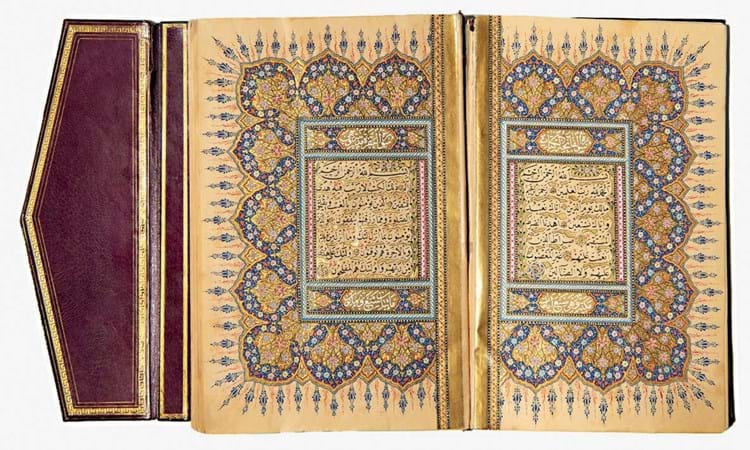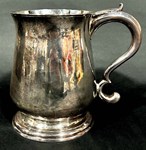The saleroom vastly underestimated the demand for an exquisitely calligraphed 19th century copy of the Quran which was offered on December 13-15.
The 7 x 5in (18 x 13cm) manuscript in ink, colour and gold was purchased by a Swiss collector in Istanbul in 1931 and had remained in his family until now.
According to a handwritten note, this Quran is mentioned in an important 19th century biographical dictionary of Persian and Turkish calligraphers, Hat ve hattatan, compiled by the Turkish scholar Mirza Habib Efendi and published in 1887. There, the Quran is attributed to a calligrapher whose name is transcribed in the Swiss owner’s note as Mohamed El Shouki.
The exact transcription of Arabic names is a science in itself, with numerous variations of the same name. There is more than one indication that the calligrapher was in fact the renowned artist known as Mehmed (Muhammed) Shawqi (Shawki/Sevki), who was born in Kastamonu near the Black Sea in 1829. He learned the basics from his uncle, but after the age of 14 he rejected other teachers and was largely self-taught.
He developed an individual, much praised style of his own and at his death in 1887 he was one of the most respected calligraphers of his time. He is still considered to be one of the great masters of the art; an international calligraphy competition, held in 2018, was named in his honour.
It is safe to assume that the numerous international bidders who joined in the action, when the Quran in Zürich was offered for a modest SFr800, were well aware of the true identity of the artist. The bidding contest went on and on, until a Turkish bidder placed the winning bid of SFr320,000 (£297,600) via thesaleroom.com.















